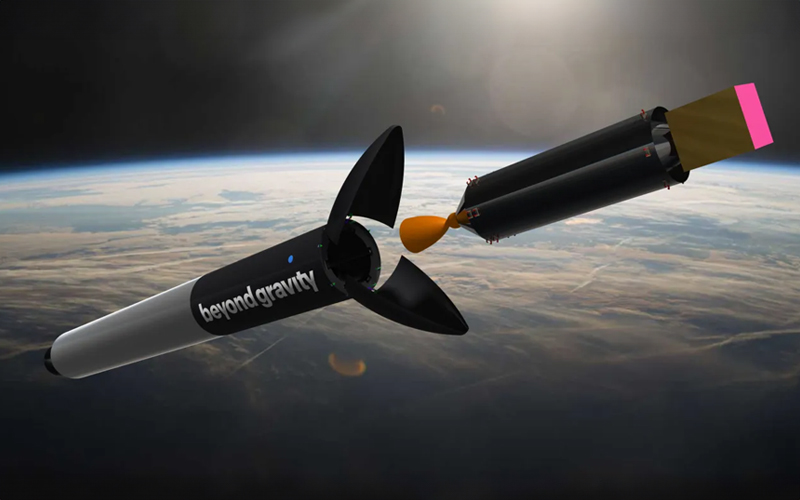
Zurich-based Beyond Gravity has announced a reusable fairing concept that would be recovered along with the first stage of a rocket.
Traditional fairings are created in two halves and cover the rocket’s payload bay. Once in space, the two fairing halves spit off, and the rocket’s second stage continues onward to deploy the payload.
At the moment, SpaceX is the only company recovering and reusing fairings. The company recovers its fairing halves with parachutes before refurbishment and reuse. Beyond Gravity is proposing an alternative to this concept.
The company’s concept would see the rocket’s payload bay and second stage encased in the vehicle’s fairing. When ready, the fairing’s forward section would split in two, allowing the rocket’s second stage to continue its mission. The fairing halves would then close and would return to Earth with the first stage.
This is not the first time Beyond Gravity has been involved in developing a reusable fairing concept. In May 2020, the company led an ESA-funded feasibility study that was concluded in late November of that year. The study did, however, look at concepts more in line with the SpaceX approach.
When asked about the status of its reusable fairing development efforts in July 2023, EVP of Beyond Gravity’s launchers division Paul Horstink told European Spaceflight that “there is yet no business case for reusable fairings, but overall new conditions could change the business case in favor of reusable fairings.”
It’s unclear if the company’s view has changed with this latest announcement or if it is simply a publicity exercise.

